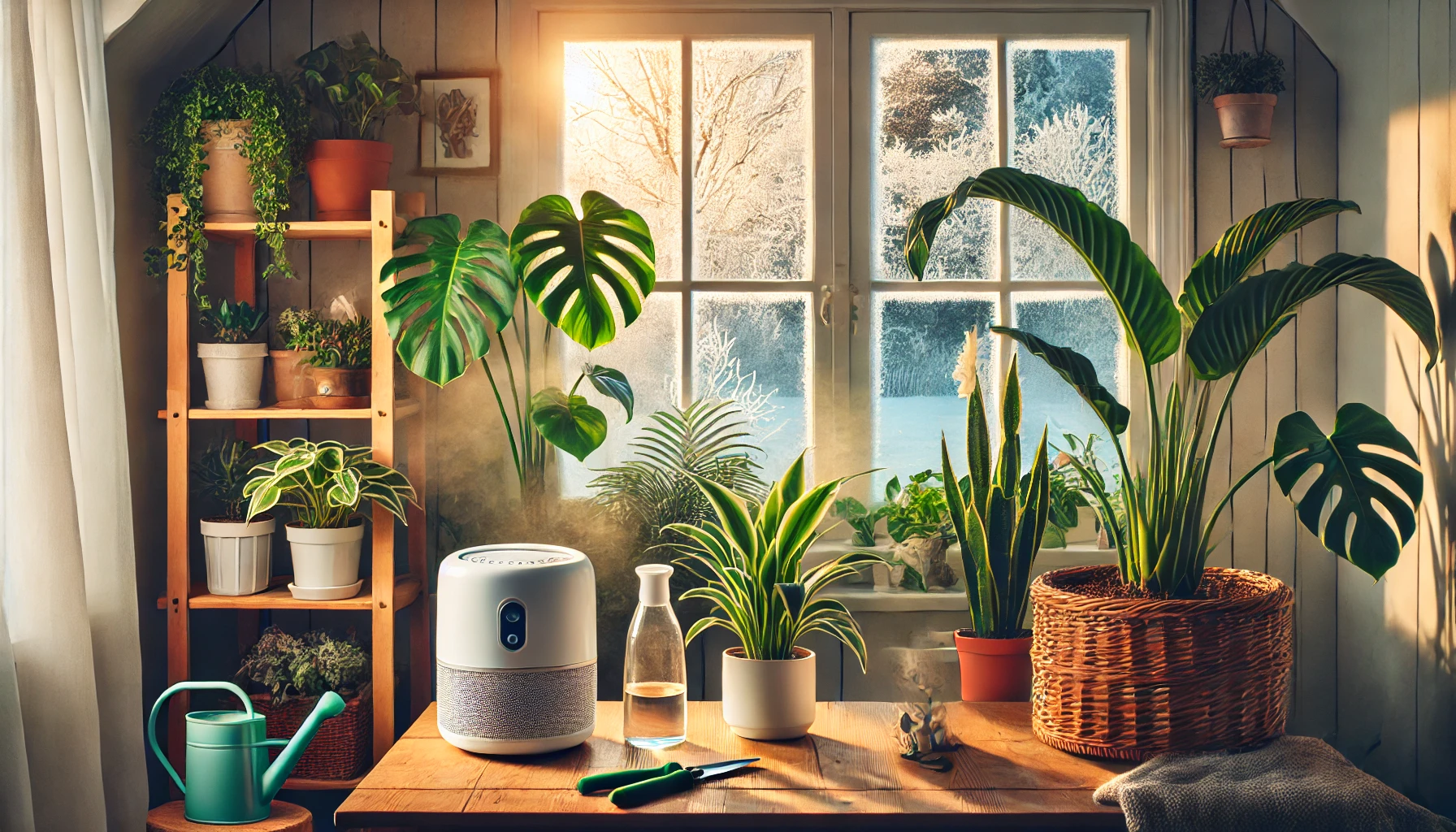Winter can be a challenging season for plants due to shorter daylight hours, lower temperatures, and reduced humidity. However, with a few adjustments to your care routine, you can help your indoor and outdoor plants survive and even thrive during the colder months. This guide will provide practical tips to keep your plants healthy throughout winter.
Challenges Plants Face During Winter
- Reduced Light: Shorter days and weaker sunlight limit photosynthesis.
- Low Humidity: Indoor heating dries out the air, causing stress for tropical plants.
- Cold Temperatures: Frost and freezing temperatures can damage leaves and roots.
- Overwatering Risk: Plants need less water in winter, and excess moisture can lead to root rot.
Tips for Indoor Plants
1. Adjust Watering
- Water less frequently as most plants enter a dormant phase in winter.
- Check soil moisture before watering; let the top inch dry out for most plants.
2. Provide Adequate Light
- Move plants closer to windows that receive the most sunlight, preferably south-facing ones.
- Clean windows regularly to maximize light penetration.
- Use grow lights to supplement natural light, especially for light-loving plants like succulents.
3. Increase Humidity
- Group plants together to create a microclimate with higher humidity.
- Use a humidifier or place a tray filled with water and pebbles near plants.
- Avoid placing plants near heaters or vents, which dry out the air.
4. Maintain Stable Temperatures
- Keep plants away from drafts, cold windows, or direct exposure to heating sources.
- Maintain a consistent temperature between 65°F and 75°F (18°C to 24°C) for most indoor plants.
5. Avoid Fertilizing
- Most plants don’t require fertilizer during dormancy. Resume feeding in spring when growth picks up.
6. Prune and Clean
- Remove dead or yellowing leaves to prevent pests and diseases.
- Wipe dust off leaves with a damp cloth to improve light absorption.
Tips for Outdoor Plants
1. Protect from Frost
- Cover plants with frost blankets, burlap, or old sheets on cold nights.
- Move potted plants to sheltered areas, such as a garage or patio.
2. Mulch Around Plants
- Apply a layer of mulch around the base of plants to insulate the roots and regulate soil temperature.
- Use organic materials like straw, wood chips, or leaves.
3. Water Sparingly
- Water plants early in the day to prevent water from freezing on leaves overnight.
- Focus on the root zone and avoid wetting the foliage.
4. Prune Carefully
- Avoid heavy pruning in winter, as exposed cuts are more susceptible to frost damage.
- Remove dead or damaged branches to prevent disease.
5. Choose Hardy Plants
- For outdoor gardens, plant cold-tolerant varieties like pansies, hellebores, or winter kale.
Special Care for Sensitive Plants
- Tropical Plants: Keep them indoors in bright, warm spots with high humidity.
- Succulents and Cacti: Water sparingly and place them in bright, indirect light.
- Flowering Plants: For winter bloomers like poinsettias or Christmas cacti, ensure they receive adequate light and water.
Common Winter Problems and Solutions
- Yellow Leaves: Often caused by overwatering or insufficient light. Adjust care accordingly.
- Brown Tips: Indicate low humidity; increase moisture using a humidifier or pebble tray.
- Leggy Growth: Caused by inadequate light. Move plants to brighter spots or use grow lights.
- Frost Damage: Trim off damaged parts in early spring and apply mulch for protection.
Winter Gardening Tips for Outdoor Plants
- Winter Veggies: Grow hardy crops like spinach, carrots, or garlic in raised beds or cold frames.
- Container Gardening: Use insulated pots to protect roots from freezing temperatures.
- Monitor Weather: Stay informed about frost warnings and cover plants as needed.
Conclusion
With thoughtful adjustments to watering, light, humidity, and temperature, you can help your plants stay healthy during winter. By providing the right care, your indoor and outdoor plants will not only survive the season but also emerge ready for vibrant growth in the spring.
